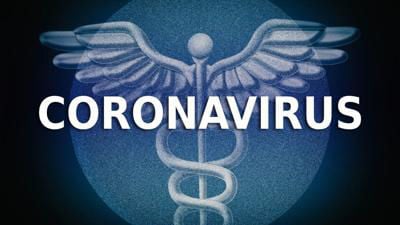
For months, high COVID-19 transmission rates have kept San Mateo County in the Centers for Disease Control and Prevention’s high risk red tier but this Thursday marked a positive shift with the county falling into the lowest risk tier.
The move comes as a relief, especially as students begin to return to in-person instruction, but county health and education leaders are reminding the public that COVID-19 is still a threat.
“The move Thursday by the Centers for Disease Control and Prevention, however, does not mean the end of the pandemic,” read a County Health press release published Friday. “Overall COVID-19 cases, fueled by the Omicron variant, remain high compared with previous periods and local health officials continue to recommend caution.”
About 186 people have been contracting the virus daily, based on a seven day rolling average, with about and fewer than nine patients have been admitted to local hospitals with COVID-19 per week, according to the CDC’s COVID-19 tracking dashboard.
According to the county’s dashboards, 6,410 residents have tested positive in the last 30 days and, as of Thursday, 27 residents were in the hospital with COVID-19, falling below the 30 to 60 range the county has seen over the past few months.
The county was required to fall below 200 cases per day and 10 hospitalizations per week to move into the CDC’s lowest risk tier, called the green community level. San Mateo County joins Marin, Sonoma, San Francisco and Alameda counties in the low or green community level.
County Superintendent Nancy McGee shared cautious optimism about the move to the green community level. District staff and administrators across the county have spent the last two years responding to the pandemic while simultaneously trying to educate their students. With lower transmission comes the hope that educators can focus more on their actual work, McGee said.
“It allows school officials and educators to do the work they’re supposed to be doing, which is running schools and educating kids,” McGee said. “The amount of time school officials have spent managing COVID is pretty high and so everyone is feeling a great sense of optimism in schools right now because they are finding they’re able now to get back to the work of educating.”
Trends can change for the negative at any moment, though, as seen at the start of the year when the omicron variant — first spotted in December — led to thousands of students and educators contracting the virus. The spike forced many teachers to stay home, forcing districts to rely more on substitute teachers, who were in high demand and hard to come by, and district staff to fill in vacant classroom positions.
Still, McGee has long stressed that schools are safe places for students to be and district officials, teachers and the Office of Education have the protocol in place to respond if cases were to tick back up, including returning to remote learning if necessary.
“Nobody expects that that is going to happen but we know that we really don’t know. We have to be ready for all levels of transmission,” McGee said.
Going into the school year, districts have largely opted to align with the state on masking by strongly recommending them instead of enforcing a mandate. Students are strongly encouraged to get vaccinated but are not yet required to because the federal Food and Drug Administration has not yet fully approved the treatments.
McGee stressed vaccines as a key tool for creating safe and healthy school environments, noting cases of polio, a devastating life-threatening disease, have returned after nearly being eradicated. A school vaccine requirement could come down the road but no sooner than July 1, 2023, according to the California Department of Public Health.
The public is also still encouraged to complete their booster series, get tested if experiencing symptoms, and to wear a high quality mask in poorly ventilated settings or if at high risk of severe disease or illness.
“When we start to decline public health measures, we’re going to see a decline in public health and that’s not what’s best for kids,” McGee said. “What’s best for kids is the healthiest environment possible that we can create for them.”
(650) 344-5200 ext. 106
























(0) comments
Welcome to the discussion.
Log In
Keep the discussion civilized. Absolutely NO personal attacks or insults directed toward writers, nor others who make comments.
Keep it clean. Please avoid obscene, vulgar, lewd, racist or sexually-oriented language.
Don't threaten. Threats of harming another person will not be tolerated.
Be truthful. Don't knowingly lie about anyone or anything.
Be proactive. Use the 'Report' link on each comment to let us know of abusive posts.
PLEASE TURN OFF YOUR CAPS LOCK.
Anyone violating these rules will be issued a warning. After the warning, comment privileges can be revoked.